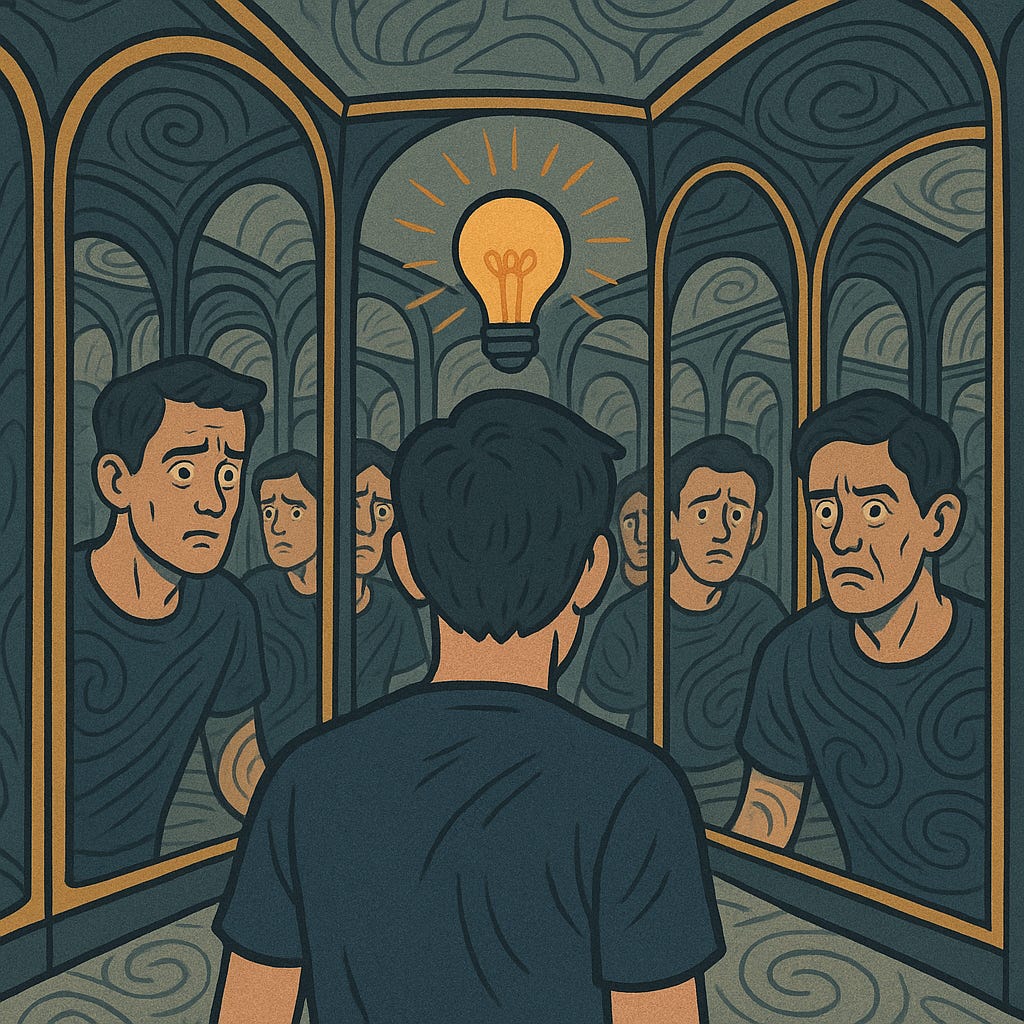House of Mirrors, Part II
The Hollow Echo of Recognition
This is the second of a five part series on the House of Mirrors.
Each part was accompanied by a Youtube video that I recommend watching if you want to understand the larger picture I’m attempting to illustrate.
The added an epilogue and addendum bring this series right up to current events. Thank you in advance for your time and your consideration.
Click here for the introduction, part one, part two, part three, part four, part five. Epilogue. Addendum.
In the second chamber of our mirrored labyrinth, we turn to a surprising pairing: Tucker Carlson and Bishop Robert Barron. At first glance, this conversation seems to step off the horizontal plane. They speak openly of faith, beauty, authority, and the aching spiritual hunger of modern man. But even here, we see the danger of reflection — not because it is wrong, but because it can so easily stop short of transformation.
Carlson, a journalist who has become a kind of cultural bellwether, approaches the faith with an outsider’s longing — curious, unsettled, and noticeably reverent toward Bishop Barron’s intellectual clarity. But it’s the very form of this curiosity that highlights our next distortion in the mirror maze: the hollow echo of recognition.
Carlson recognizes that something is wrong. That modern life is thinning out the human spirit. That secular liberalism, for all its achievements, has produced a generation of isolated men and aimless youth. But what he cannot yet articulate — and what many in his audience may also feel but not name — is that recognition is not the same as reorientation.
Bishop Barron offers something more — not just commentary, but the foundation itself: the Logos made flesh. He speaks of Jesus Christ not as symbol or spiritual option, but as the definitive axis of reality — the vertical pole that gives the horizontal its true structure and coherence. And he is right to note that where this understanding disappears, the substitutes rush in: ideology, resentment, hedonism, cynicism.
But here’s the catch: even this kind of conversation, when filtered through the digital echo chamber, can become an aesthetic, rather than a call to conversion.
In a house of mirrors, recognition becomes performance. People feel drawn to the glow of something real — something ancient and beautiful — but instead of bowing, they admire it. They follow the ritual of engagement: like, comment, subscribe. And then they move on.
This is why the Gospel is not simply a message; it is a rupture. It breaks through the glass. It refuses to be one more reflection among many. It demands death — death to ego, death to delusion — and offers life on new terms.
As Bishop Barron points out, Christianity is not merely a set of moral teachings or a historical memory. It is revelation: not what we ascend toward, but what has descended to us. And unlike the ideological substitutes that promise meaning but deliver control, Christ does the opposite — he invites submission only to offer true freedom.
But here, the mirror fights back. It flatters. It reflects our admiration back to us. And so the risk in this second room is not error, but delay. Recognition becomes enough. Fascination replaces faith. The vertical axis is glimpsed — and then absorbed into commentary.
The mirror shows us the shape of the door — but not how to walk through it.

